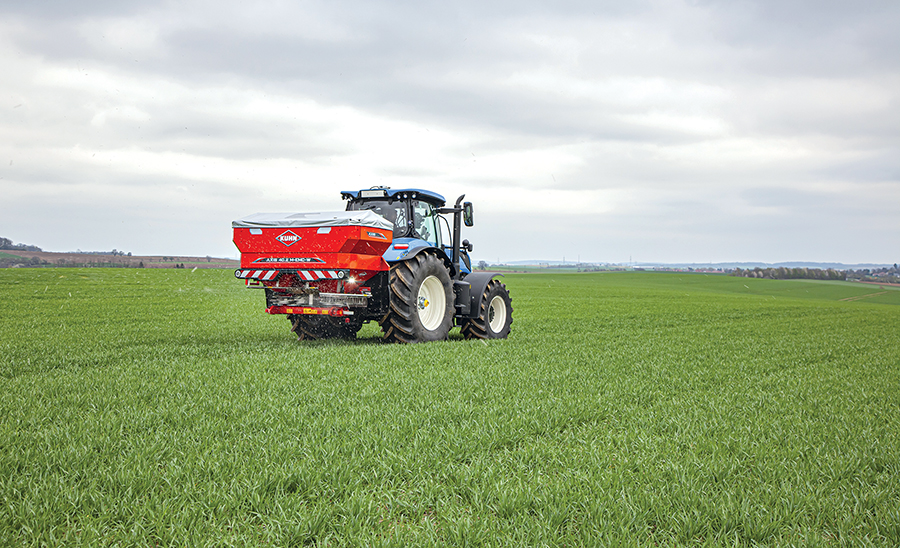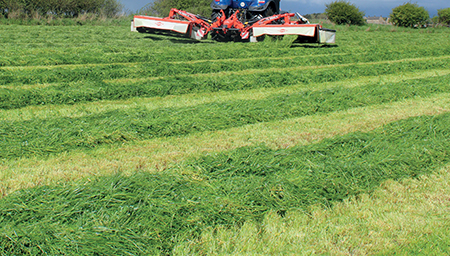How to get the best out of your grass silage
4th July 2024
Farmers are being urged to look more closely at silage analysis and consider ‘plan B or C’. Sarah Kidby reports.

Working across England and into Northern Ireland, Ken Stroud, Ecosyl silage specialist at Volac, sees huge variability in silage quality – but farmers who consistently produce better quality silage, tend to have a thorough understanding of silage analysis. While technology, silage analysis and cow genetics have all improved, many farmers still follow ‘plan A’ instead of thinking about ‘plan B or C’, he said during the Forage Forum in May.
Silage analysis relies heavily on the quality of the sample. Ken’s top tips are:
- Make sure the sample is a true representation of the crop
- Samples should be double bagged, all air removed, then labelled immediately and kept in a cool bag with freezer blocks, or refrigerated
- Take samples towards the end of the day, at the beginning of the week, so they can be posted that evening and arrive the next morning
- Combine results with a visual inspection of the ensiled crop – how it looks, feels and smells.
Look closer at silage analysis
Whilst most farmers will look at dry matter, protein, ME, and perhaps sugar and pH, Ken advised digging deeper into your silage analysis results. Also, keep a record of the dates of cutting, tedding and silaging process, weather conditions and applications of slurry and fertiliser.
What to look out for:
Dry matter: The target for clamped grass is around 30% (baled silage is often higher), however Ken said there can be too much focus on DM – if you have 30% DM but had to wilt it for 2-3 days, all the goodness will be lost.
Protein: The range is commonly 12–17%, though it’s very variable. Bi-cropping also creates problems with accurate analysis, as legumes added into grass leys will increase the overall protein. Maize and wholecrop, meanwhile, tend to be around 8.5–10%.
Intake potential: This varies depending on how the laboratory tests but is useful to look at.
Neutral detergent fibre (NDF): Increases with plant maturity and determines the rate of forage digestion in the rumen. High levels, over 55, are associated with low D values and intake levels. Ideally it should be below 50 – but often below 45 is preferred with grass silage in high yielding cows and multi-cut systems.
Sugars/water soluble carbohydrates: Varies from almost zero to 6% in very dry grass silages. Low residual levels in silage are acceptable as long as they have been utilised in the production of lactic acid, not undesirable acids like acetic or butyric, Ken explained. High residual levels improve palatability but increase risk of aerobic spoilage.
Ash content: This is a measure of total mineral content, and a good indicator of soil contamination. Uncontaminated grass can have an ash content of 5–8%, while levels greater than 9 indicate significant contamination leading to poor fermentation and butyric acid production.
One of the contributors to higher ash contents is the increased use of tedder rakes. Whilst it’s a great tool, it should be used carefully (not set too low).
pH: The lower the pH, the greater the acidity which reduces the chance of secondary (butyric) fermentation occurring. A range of 3.8–4.2 is generally acceptable but this can be higher in silages above 35% DM. Importantly, this must occur very quickly in the fermentation process to enhance the silage.
Ammonia (NH3 % of total N): This is a good indicator of how much protein has been completely broken-down during ensiling. The target is below 5% of total nitrogen. High levels, above 10, indicate poor fermentation.
Lactic acid: Reflects the efficiency of fermentation. The optimum level is 80–120g/kg and the ratio of lactic acid to voluble fatty acids (VFAs) must be monitored. It should be a minimum of 3:1 but 5:1 or more ensures the best fermentation.
Volatile fatty acids: This is a measure of undesirable fermentation acids, mainly butyric and acetic. High values indicate poor fermentation – the target is to have as low a value as possible, certainly below 20, but Ken encourages farmers to aim for 10 or even less. Any amount of VFAs in forage means DM losses – and with farmers looking to be more feed efficient and sustainable, this is one area where they need to “sit up and take notice”, Ken added.

If there are issues with yeasts and moulds, heterofermenters will sometimes be used to deliberately produce acetic acid to fend them off. However, this usually occurs in higher DM forages, so the first port of call is to bring the wilting time down and the DM back a bit, Ken said.
If VFAs are persistently high, consider lighter cuts and a maximum wilting period of 24 hours. Bringing wilting periods down is an area farmers should target over the next few years.
To avoid soil contamination, Ken advises leaving a reasonable amount of stubble when mowing – do not remove the last leaf node – and set the tedder in the field, not on concrete so it doesn’t sink down. Then, spend five minutes following the tedder or mower to ensure they’re not set too low – they must not scrape the soil. With the window between slurry applications and cutting getting smaller, we must work very hard on crop hygiene to prevent undesirable bugs upsetting the fermentation.
A proven inoculant such as Ecosyl can help ensure more sugar is converted to lactic acid to improve fermentation, and helps to stress clostridial bugs that make it into the crop, Ken concluded.
Visit the Volac website for more information.
Read more livestock news



